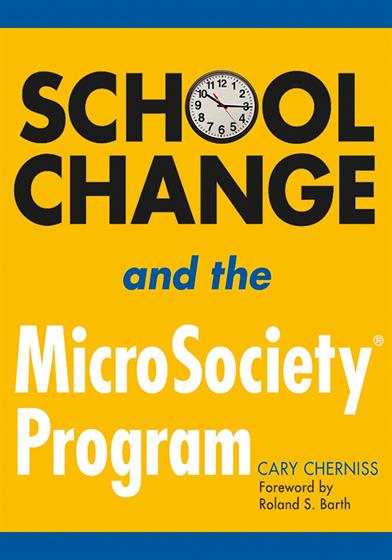Dedication
Foreword by Roland S. Barth
Preface
Acknowledgments
About the Author
Part One: Overview of the Program
1. The MicroSociety® Program
A Day in the Life of a MicroSociety® Program School
The Origins of the MicroSociety® Program
The MicroSociety® Idea Spreads
The Guiding Philosophy Behind the MicroSociety® Program
Basic Elements of the Program
MicroSociety® Program Outcomes: What the Research Shows
The Problem of Implementation
Conclusion
2. Challenges Encountered in Implementing the Program
Lack of Teacher Buy-in
Excessive Time and Work Demands
Making Links Between the MicroSociety® Program and the Core Curriculum
What to Do With “Problem” Students?
The Problem of Staff Conflict
The “Fog of Change”
Threats to Sustainability
Conclusion
Part Two: Guidelines for Successful Implementation
3. Creating a Favorable Context
Guideline 1: Relationships Among Teachers and Principal
Guideline 2: Goodness of Fit
Guideline 3: Parent and Community Involvement
Guideline 4: Principal Support
4. Introducing the Program to the School
Guideline 5: Giving Teachers a Meaningful Voice
Guideline 6: Planning Before the Program Begins
Guideline 7: Securing Additional Funding
Guideline 8: Matching Teachers With Ventures
Guideline 9: Realistic Goals and Time Perspectives
5. Keeping It Running
Guideline 10: Expand Student Responsibility
Guideline 11: Seek Out Additional Resources
Guideline 12: Create a Culture of Experimentation
Guideline 13: Continue to Set Aside Time for Planning
Guideline 14: Create an Open and Flexible Decision-Making Structure
6. Leadership – The Critical Ingredient
Guideline 15: The Principal as Advocate
Guideline 16: Emotionally Intelligent Leadership
Part Three: Case Studies in Implementation
7. A Successful Replication: Mesquite Elementary School
Before-the-Beginning: Providing a Favorable Context
Introducing the Program to the School
Making It Work: The Management Team, the Coordinator, and the Consultant
Maintaining Teacher Commitment Through Decision-Making, Planning, and Training
Seeking Out and Using Resources
A Supportive Principal and Organizational Climate
The Principal’s Social Capital and Emotional Intelligence
Conclusion
8. Wellfleet Elementary: Everything That Can Go Wrong…
The School and Its History With the Program
What Went Wrong? The Before-the-Beginning Phase
Sowing the Seeds of Trouble: Introducing the Program to the School
Becoming Operational: Trying to Cope With Chaos
The Organizational Context: Weak Leadership and a Negative Climate
9. Montgomery Middle School: Success That Could Not Be Sustained
The School and Its Community
Introducing the Program to the School: The Principal Takes the Lead
Becoming Operational: The Teachers Confront Reality
The Program Ends
Part Four: Sustaining School Change in an Ever-Changing World
10. Implications for Research, Policy, and Practice
Implementing Change Versus Sustaining It
Two Central Lessons That Emerge From the Study
A First Step: The Selection and Training of Educators
The Role of the External Environment
Conclusion
Resource A: A Description of the Study
Resource B: The Implementation Guidelines
References
Index



